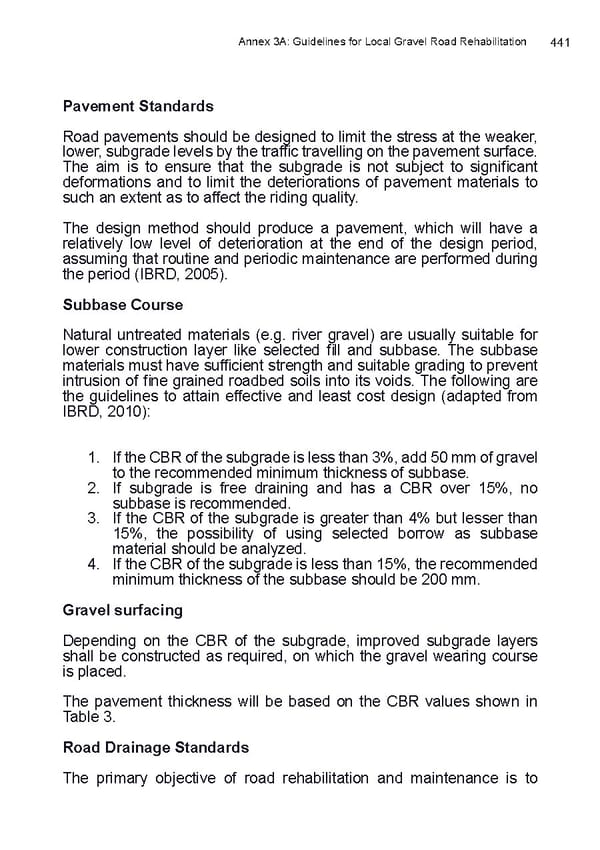Annex 3A: Guidelines for Local Gravel Road Rehabilitation 441 Pavement Standards Road pavements should be designed to limit the stress at the weaker, lower, subgrade levels by the traffic travelling on the pavement surface. The aim is to ensure that the subgrade is not subject to significant deformations and to limit the deteriorations of pavement materials to such an extent as to affect the riding quality. The design method should produce a pavement, which will have a relatively low level of deterioration at the end of the design period, assuming that routine and periodic maintenance are performed during the period (IBRD, 2005). Subbase Course Natural untreated materials (e.g. river gravel) are usually suitable for lower construction layer like selected fill and subbase. The subbase materials must have sufficient strength and suitable grading to prevent intrusion of fine grained roadbed soils into its voids. The following are the guidelines to attain effective and least cost design (adapted from IBRD, 2010): 1. If the CBR of the subgrade is less than 3%, add 50 mm of gravel to the recommended minimum thickness of subbase. 2. If subgrade is free draining and has a CBR over 15%, no subbase is recommended. 3. If the CBR of the subgrade is greater than 4% but lesser than 15%, the possibility of using selected borrow as subbase material should be analyzed. 4. If the CBR of the subgrade is less than 15%, the recommended minimum thickness of the subbase should be 200 mm. Gravel surfacing Depending on the CBR of the subgrade, improved subgrade layers shall be constructed as required, on which the gravel wearing course is placed. The pavement thickness will be based on the CBR values shown in Table 3. Road Drainage Standards The primary objective of road rehabilitation and maintenance is to
 Local Road Management Manual Page 441 Page 443
Local Road Management Manual Page 441 Page 443